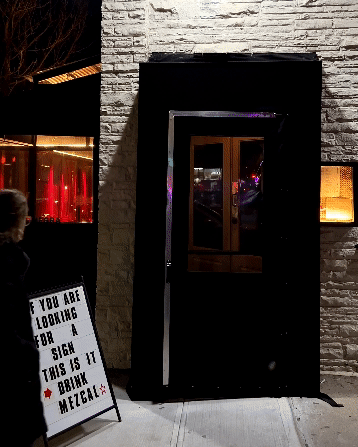In the frenzy of ongoing openings, between the highly publicized new chapters from name-brand megachefs and whispered, word-of-mouth semi-private debuts stoking curiosity (hello, Frog Club!), there is a gap a mile wide. A hardworking restaurant critic can go out every night, discreetly belch his way through the newest and the loudest hotspots, maintain ready answers to friends and strangers’ interrogations of “Where should we eat now?,” and still overlook some of the neighborhood steadies whose Resy pages are not a source of constant frustration, who open quietly and serve excellent food night after night after night.
I am guilty. I am here to make amends. I have been to Jean-Georges’s new Park Avenue dining room, and I have occupied one of April Bloomfield’s 20 seats at Sailor. Having recommended both, let me now recommend an uninspiring stretch of Fourth Avenue in Brooklyn, hard by the tire shop and a nondescript liquor store. In an area I called Park Slope, until a Park Sloper of my acquaintance protested that the Gowanus dividing line is right down the middle of the avenue and we were west of it, stands Alma Negra, which opened in May 2002, during the long tail of the streetery era.
Inside, half of Alma Negra’s dining room is taken up by a long, wood-topped bar, around which orbit a bank of tables and a greenhouse’s worth of plant life. I never visited Alma Negra with more than a few hours’ notice, and I never encountered a problem or an attitude. Most important: I never had anything less than a very good meal.
Alma Negra is the third restaurant from Fermín Teco, who arrived in New York from Puebla, Mexico, in 2000 — the city has seen such a Poblano influx in the last few decades that it’s now called, in some corners, Puebla York — and began cooking at the kind of restaurants that teach a cook to be a chef, if not always a particularly novel or creative one. (He worked at Carmine’s, the Manhattan red-sauce tourist trap.) From there, he worked for Máximo Tejada at Rayuela and, in 2015, opened Amaranto in Bushwick. There, as at Alma Negra, he began cooking Mexican food that’s far older than what’s served at most of New York’s factory-line burritories—it’s Mayan as much as Mexican.
There’s no margarita on the colorful and extensive cocktail menu, and there doesn’t need to be. They’ll make you one if you want it, just like your local Irish pub will. There is guacamole listed among the entradas — a Mexican restaurateur probably can’t get away without it if they want to make payroll — and it’s fine, served with homemade fried tortillas. But why fill up when you could have a cool, spicy bowl of aguachile de tuna, a spoonable, cevicheish salad of nearly raw loin in an herby green broth with thin coins of jicama? Or one of Teco’s tamales, magically both dense and light in its ruddy bath of sikil pak, a smoky Mayan pumpkin-seed sauce? Unlike many traditional tamales, made with lard, Teco’s is vegan, which must be the secret to its soft touch. (It is also, like every dish save dessert, gluten free.)




Photo: Hugo Yu.
Photo: Hugo Yu.
Teco doesn’t skip steps. Down in the basement, he nixtamalizes his own corn — imported from Mexico — and presses his own tortillas, not in batches but to order. They’re not actually listed on the menu, but you should order them anyway. They arrive swaddled in a napkin-lined basket, blue as a bruise and earthy as anything. They’re perfect for wrapping up short ribs, braised for five hours in huaxmole, a tart, funky sauce made from guaje, sometimes called river tamarind. There is very little on the menu that I wouldn’t stick in one, authentic or not, like the pile of shrimp and squid atop vivid arroz verde, or the excellent octopus, a giant biceps whose bulk belies its tenderness, served in a peanut mole with an unexpectedly perfect complement of cauliflower.
Mexican food is never in short supply in this city, but at the moment, intriguing spots are coming fast and furious. I’m eager to try the newly opened Corima, from Fidel Caballero, in Chinatown, and Soledad, from Julian Medina, on the Upper East Side. Soon, I’m sure, I will, and the buzz and the rush of the latest will take hold again. But until then, I’m glad to have Alma Negra in my back pocket. On the nights I went — random weeknights — it filled up to a comfortable but not squashed fullness. I watched couples sipping mezcal and groups of three and four ordering dinner unhurriedly. I asked a Park Slope–dwelling colleague if he’d been, and he looked as though my asking left him confused. “Yeah, it’s good,” he said, furrowing his brow a little, and then, “Very good, actually.” Couldn’t have said it better myself.
See All
